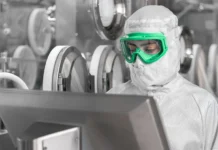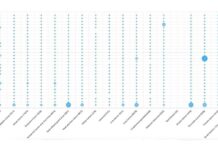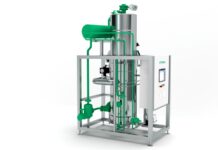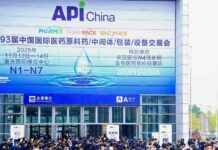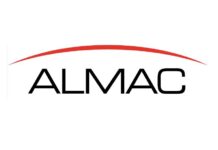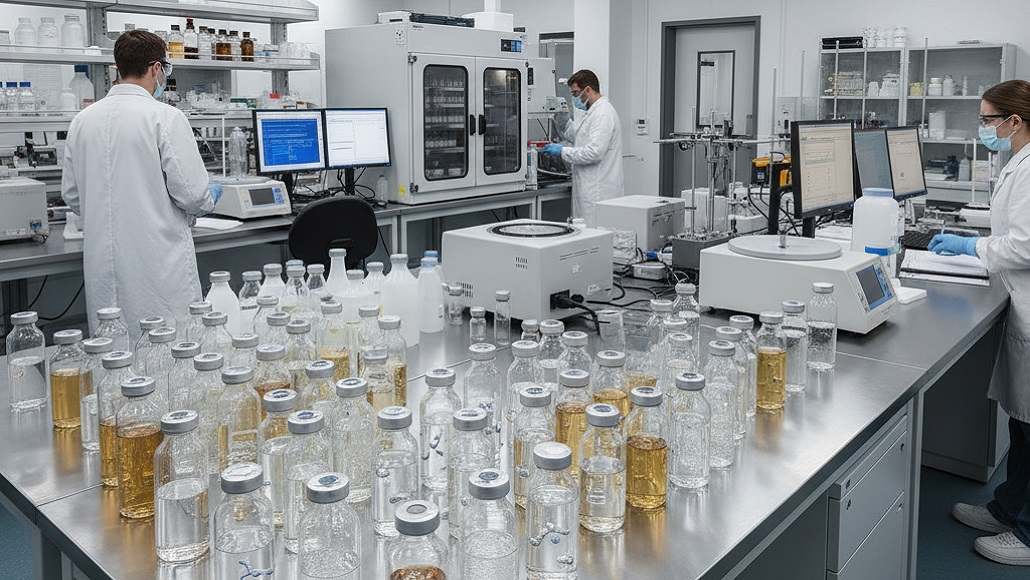Biopharmaceutical Formulation Challenges and Stability Solutions
The biopharmaceutical revolution has fundamentally transformed therapeutic medicine, with protein-based therapeutics including monoclonal antibodies, fusion proteins, antibody-drug conjugates, and advanced biologic systems becoming cornerstones of treatment for cancer, autoimmune diseases, metabolic disorders, and numerous other conditions. Yet this transformation carries profound challenges related to biopharmaceutical formulation stability that distinguish biologics from traditional small molecule drugs. The complex three-dimensional structures, delicate conformational requirements, and susceptibility to degradation that characterize therapeutic proteins demand sophisticated formulation strategies ensuring products maintain quality, safety, and efficacy throughout manufacturing, storage, and administration.
The Structural Complexity of Biopharmaceutical Products
Therapeutic proteins exist as marginally stable entities where native conformations represent narrow energy minima surrounded by vast conformational space accessible through relatively small perturbations. This inherent thermodynamic fragility arises from the delicate balance of weak non-covalent interactions including hydrogen bonds, electrostatic attractions, hydrophobic effects, and van der Waals forces that maintain proper folding. Unlike small molecule drugs where covalent bonds define structure, protein architecture depends on environmental factors including pH, temperature, ionic strength, and the presence of stabilizing or destabilizing agents.
Monoclonal antibodies, representing the largest class of approved biotherapeutics, exemplify this structural complexity. These immunoglobulin molecules comprise multiple domains with distinct folding patterns, connected by flexible hinge regions that enable conformational changes essential for biological function. The variable regions responsible for antigen recognition demonstrate particular susceptibility to aggregation, as complementarity-determining regions often contain hydrophobic or charged residues that drive intermolecular interactions when transiently exposed during structural fluctuations.
The marginal stability of proteins has functional significance, as conformational flexibility enables binding interactions, allosteric regulation, and biological activities. However, this same flexibility creates vulnerabilities during manufacturing, formulation, storage, and administration. Monomeric folded proteins can undergo partial unfolding, exposing hydrophobic cores normally buried in native structures. These destabilized intermediates show dramatically increased propensity for aggregation compared to properly folded proteins, as exposed hydrophobic regions drive association through favorable entropy contributions from releasing ordered water molecules.
Mechanisms of Protein Degradation and Instability
Chemical instability pathways represent one major category of degradation affecting biopharmaceutical formulation stability. Oxidation of methionine, cysteine, histidine, tryptophan, tyrosine, and phenylalanine residues occurs through reaction with oxidizing agents including dissolved oxygen, peroxides, or metal ion catalysts. Oxidized residues may alter protein charge, hydrophobicity, or conformational stability, potentially triggering aggregation or loss of biological activity. Methionine oxidation to sulfoxide or sulfone represents a particularly common modification affecting both activity and immunogenicity.
Deamidation involves hydrolytic conversion of asparagine or glutamine side chains to aspartic acid or glutamic acid, introducing negative charges that alter protein electrostatic properties and potentially destabilize native conformations. Asparagine residues show particular susceptibility when located in flexible regions or next to glycine residues that provide minimal steric hindrance to the cyclic intermediate formed during deamidation. This seemingly minor modification can profoundly impact protein stability, aggregation propensity, and biological function.
Disulfide bond rearrangement or formation of non-native disulfide linkages creates additional chemical instability pathways. While disulfide bonds contribute to protein stability when correctly formed, incorrect pairing during refolding or exchange reactions during storage can generate misfolded species with altered properties. Free cysteine residues not involved in disulfide bonds pose particular risks, as they may participate in intermolecular disulfide formation leading to covalent aggregation.
Physical instability encompasses non-covalent processes including protein unfolding, aggregation, and adsorption to surfaces. Aggregation represents the most serious physical instability concern, as aggregates compromise product quality, potentially reduce efficacy, and significantly increase immunogenicity risks. The aggregation process involves multiple pathways depending on whether native proteins, partially unfolded intermediates, or pre-existing aggregates serve as nucleating species.
Native state aggregation occurs when properly folded proteins self-associate through complementary surface patches, often involving electrostatic attractions between oppositely charged regions or hydrophobic interactions between exposed non-polar residues. While individual interactions may be weak, multivalent binding creates stable oligomers and larger aggregates. The kinetics of native state aggregation show strong concentration dependence, as collision frequency between proteins increases with concentration squared.
Denatured protein aggregation follows partial or complete unfolding that exposes normally buried hydrophobic residues and backbone hydrogen bonding groups. These aggregation-prone conformations rapidly associate through hydrophobic collapse and formation of intermolecular beta sheets, generating irreversible aggregates resistant to dissociation. Thermal stress, pH extremes, mechanical agitation, freeze-thaw cycles, and interface exposure all promote unfolding and subsequent aggregation through this pathway.
Nucleation-dependent aggregation involves formation of critical oligomeric species that serve as templates for rapid aggregate growth. Following an initial lag phase where nuclei form, aggregation accelerates dramatically as monomers or oligomers add to existing aggregates. Pre-existing aggregates or particulates can seed aggregation by providing surfaces that catalyze protein association, explaining why trace aggregate levels profoundly influence stability.
Formulation Strategies for Stability Enhancement
Buffer selection represents a foundational formulation decision impacting biopharmaceutical formulation stability through pH control and ionic strength effects. Histidine buffers have gained prominence in monoclonal antibody formulations due to favorable properties including appropriate buffering capacity in the pH 5.5 to 6.5 range often optimal for antibody stability, minimal effects on protein-protein interactions compared to phosphate buffers, and excellent compatibility with proteins. Phosphate and citrate buffers also find widespread use, with selection guided by protein-specific stability studies across pH ranges.
The pH optimum for protein stability typically differs from the isoelectric point where proteins carry no net charge. At the isoelectric point, reduced electrostatic repulsion facilitates protein-protein interactions and aggregation. Formulation pH is usually selected to provide net positive or negative charge that generates electrostatic repulsion inhibiting aggregation, while avoiding pH extremes that might promote chemical degradation pathways such as deamidation or hydrolysis.
Stabilizing excipients including sugars, polyols, and amino acids protect proteins through multiple mechanisms. Preferential exclusion describes the thermodynamic phenomenon where certain excipients are excluded from protein surfaces, increasing the chemical potential of the unfolded state relative to the native state and thereby stabilizing native conformations. Sugars such as sucrose and trehalose exemplify preferential exclusion agents, showing remarkable ability to stabilize proteins during freeze-drying and storage.
The water replacement hypothesis provides another mechanism for sugar-mediated stabilization, particularly relevant during lyophilization. As water is removed during drying, sugar molecules form hydrogen bonds with protein surfaces, replacing water molecules that normally maintain protein hydration. This hydrogen bonding network preserves protein structure in the dried state, preventing collapse or aggregation that would otherwise occur upon water removal.
Amino acids serve diverse roles in biopharmaceutical formulation stability. Arginine acts as an effective aggregation inhibitor through mechanisms including preferential exclusion, prevention of protein-protein interactions through electrostatic effects, and suppression of conformational fluctuations. Methionine functions as an antioxidant, scavenging reactive oxygen species that would otherwise oxidize protein residues. Histidine provides both buffering capacity and stabilization effects, explaining its widespread use in protein formulations.
Surfactants protect proteins from interface-induced aggregation and adsorption losses. Polysorbates represent the most commonly used surfactants in biopharmaceutical formulations, preventing protein adsorption to container surfaces and air-liquid interfaces where unfolding and aggregation occur. The protective mechanism involves competitive adsorption where surfactant molecules preferentially occupy interfaces, leaving proteins in bulk solution where they remain properly folded and stable.
Managing High-Concentration Formulations
The clinical demand for high-concentration protein formulations, driven by requirements for subcutaneous administration with volume constraints and desire for high doses per injection, introduces substantial formulation challenges. Protein concentrations exceeding 100 milligrams per milliliter elevate viscosity to levels complicating manufacturing operations, limiting injection speed, and causing pain during administration.
Viscosity in concentrated protein solutions arises from hydrodynamic interactions, electrostatic effects, and specific protein-protein interactions that deviate from ideal solution behavior. At high concentrations, proteins can no longer move independently, with overlapping hydrodynamic volumes and direct interactions between molecules dramatically increasing resistance to flow. Electrostatic interactions prove particularly important for charged proteins such as antibodies, where long-range repulsive or attractive forces significantly influence rheological properties.
Formulation strategies to manage viscosity focus on reducing protein-protein interactions through pH optimization away from the isoelectric point, addition of salts that shield electrostatic interactions, and incorporation of excipients that modify solution properties. Recent computational approaches employ molecular dynamics simulations and coarse-grained modeling to predict viscosity behavior and guide formulation development, accelerating optimization compared to purely empirical screening.
Colloidal stability at high protein concentrations requires careful attention, as reduced intermolecular distances increase collision frequency and aggregation risks. Electrostatic repulsion generated through appropriate pH selection provides kinetic barriers to aggregation, while excipients that promote preferential hydration reduce attractive interactions. Maintenance of native protein conformations through temperature control and minimization of stress during processing represents another critical stability factor.
Manufacturing Stress Factors and Mitigation Strategies
Bioprocessing operations expose proteins to numerous stress conditions that can trigger degradation. Pumping operations create shear forces that may unfold proteins or generate air-liquid interfaces where surface-induced aggregation occurs. Heat exchangers subject formulations to temperature fluctuations potentially causing thermal unfolding. Filtration processes create high local pressures and expose proteins to membrane surfaces that might promote adsorption or aggregation.
Freeze-thaw cycles represent particularly harsh stress conditions encountered during frozen storage and transportation. Ice crystal formation concentrates proteins in residual unfrozen phases, dramatically increasing local concentrations where aggregation propensity rises. Additionally, ice-solution interfaces provide surfaces promoting protein unfolding. Cryoprotectants including glycerol, dimethyl sulfoxide, or sugars mitigate freeze-thaw damage by reducing ice crystal size, maintaining protein hydration, and stabilizing protein structures.
Agitation and pumping operations introduce mechanical stress through shear forces and generation of air-liquid interfaces. Protein molecules adsorb to air-liquid interfaces where partial unfolding exposes hydrophobic residues, creating aggregation nuclei that propagate through bulk solution. Surfactant addition represents the primary strategy for preventing interface-induced aggregation, as surfactant molecules preferentially occupy interfaces and prevent protein adsorption.
Light exposure can trigger photodegradation, particularly for proteins containing photosensitive amino acids including tryptophan, tyrosine, and phenylalanine. Photoexcited residues generate reactive oxygen species that oxidize nearby amino acids or initiate radical-mediated degradation cascades. Amber glass containers or opaque packaging protect products from light exposure during storage and distribution.
Container Closure Considerations
Selection of appropriate primary packaging materials profoundly influences biopharmaceutical formulation stability. Glass vials have served as traditional containers for injectable biologics, offering excellent chemical inertness, impermeability to gases and vapors, and transparency enabling visual inspection. However, glass presents disadvantages including potential for leaching of alkaline compounds that elevate formulation pH, surface adsorption of proteins leading to loss and aggregation, and breakage risks during shipping and handling.
Polymer-based containers including prefilled syringes manufactured from cyclic olefin copolymer or cyclic olefin polymer offer advantages over glass including superior break resistance, reduced extractables and leachables, and excellent barrier properties. Careful selection of polymer grades and processing conditions minimizes extractables that might impact protein stability or safety. Surface treatments can further optimize polymer containers by reducing protein adsorption or enhancing lubricity for prefilled syringe applications.
Closure systems including rubber stoppers and plungers require scrutiny regarding potential interactions with protein formulations. Silicone oil used as lubricant in prefilled syringes can trigger protein aggregation at oil-water interfaces, necessitating careful control of silicone oil levels or development of alternative lubrication strategies. Extractables from rubber closures including sulfur-containing vulcanization accelerators or antioxidants may impact protein stability through oxidative or other chemical mechanisms.
Analytical Methods for Stability Assessment
Comprehensive characterization of biopharmaceutical formulation stability requires orthogonal analytical techniques providing complementary information about chemical modifications, conformational changes, aggregation, and functional activity. Size exclusion chromatography quantifies soluble aggregates and fragments, providing critical data on aggregate levels that correlate with immunogenicity risks. High-resolution techniques including analytical ultracentrifugation offer superior resolution of oligomeric species that might escape detection by size exclusion chromatography.
Capillary electrophoresis separates protein variants based on charge, detecting chemical modifications including deamidation, oxidation, or glycosylation changes that alter net charge. Isoelectric focusing provides complementary information, resolving charge variants with exceptional sensitivity. Mass spectrometry delivers precise molecular weight determination enabling identification of specific chemical modifications, while peptide mapping combined with mass spectrometry localizes modifications to specific amino acid residues.
Differential scanning calorimetry measures protein thermal stability by monitoring heat absorption during controlled heating, providing thermodynamic parameters describing protein unfolding. The temperature of unfolding onset (Tonset) or midpoint temperature (Tm) serve as indicators of conformational stability, with higher values suggesting greater resistance to thermal denaturation. Comparison of differential scanning calorimetry profiles across formulations guides selection of stabilizing conditions.
Dynamic light scattering monitors hydrodynamic particle size, detecting large aggregates or particles that might escape detection by size exclusion chromatography. This technique proves particularly valuable for detecting subvisible particles in the 100 nanometer to 10 micrometer size range that pose immunogenicity concerns. Complementary particle counting techniques including flow microscopy provide additional information on particle concentration and morphology.
Lyophilization and Stabilization of Dried Products
Freeze-drying or lyophilization enables long-term stability for proteins susceptible to degradation in aqueous solution. The process removes water through sublimation under vacuum following freezing, generating dried products with dramatically extended shelf lives compared to liquid formulations. However, lyophilization itself imposes stresses requiring careful formulation and process optimization.
Freezing stress arises from ice crystal formation, freeze-concentration effects, and cold denaturation. Cryoprotectants stabilize proteins during freezing, with mechanisms including preferential exclusion that stabilizes native conformations, modification of ice crystal morphology reducing mechanical stress, and maintenance of protein hydration. Controlled freezing rates influence ice crystal size and morphology, with implications for protein stability and dried product structure.
Primary drying removes ice through sublimation while maintaining product temperature below the collapse temperature or glass transition temperature of the maximally freeze-concentrated solution. Operation below these critical temperatures preserves amorphous structure and prevents collapse that would compromise dried product appearance and reconstitution characteristics. Secondary drying removes residual water bound to protein and excipients, achieving target moisture contents typically below 3% where proteins show optimal stability.
Lyoprotectants including sugars stabilize proteins in the dried state through water replacement mechanisms, forming hydrogen bonds with protein surfaces that substitute for hydration water removed during drying. The resulting amorphous matrix physically separates protein molecules, preventing aggregation during storage. Selection of appropriate lyoprotectant type and concentration balances stability benefits against practical considerations including reconstitution time and solution viscosity after rehydration.
Protein Engineering Approaches to Stability Enhancement
While formulation strategies address stability through external environmental control, protein engineering modifies the amino acid sequence itself to enhance intrinsic stability. Site-directed mutagenesis replaces destabilizing residues with alternatives predicted to improve folding, reduce aggregation propensity, or enhance resistance to chemical degradation. Computational tools guide mutagenesis strategies by identifying aggregation-prone regions, predicting effects of sequence variations on stability, and simulating protein behavior under stress conditions.
Deimmunization represents a specialized protein engineering application addressing immunogenicity concerns. Computational algorithms identify potential T-cell epitopes within protein sequences, guiding mutations that disrupt epitopes while preserving biological activity. This approach proves particularly valuable for therapeutic proteins derived from non-human species that might trigger immune responses in patients.
PEGylation, the covalent attachment of polyethylene glycol chains to protein surfaces, enhances stability through multiple mechanisms including steric shielding that reduces protein-protein interactions, increased hydrodynamic size that slows renal clearance extending circulation time, and reduced immunogenicity through masking of epitopes. While PEGylation generally improves pharmacokinetic properties, careful optimization prevents excessive modification that might compromise biological activity.
Regulatory Considerations and Quality Standards
Regulatory frameworks governing biopharmaceutical development emphasize demonstration of consistent product quality through comprehensive characterization and robust manufacturing processes. The concept of comparability applies when manufacturing changes are implemented, requiring extensive analytical testing demonstrating that modified products maintain equivalent quality attributes to reference material. This comparability exercise encompasses physicochemical characterization, biological activity assays, stability studies, and potentially clinical studies depending on the nature and extent of changes.
International Conference on Harmonisation guidelines provide frameworks for stability testing, establishing conditions and durations for evaluating biopharmaceutical formulation stability. Long-term studies at recommended storage temperatures establish expiration dating, while accelerated and stress conditions probe degradation pathways and identify degradation products. Photostability testing evaluates light sensitivity, guiding packaging requirements.
Future Directions in Biopharmaceutical Stabilization
Emerging technologies promise to address remaining stability challenges and enable next-generation biotherapeutics. Computational approaches including molecular dynamics simulations, machine learning algorithms, and artificial intelligence show increasing sophistication in predicting protein behavior, identifying optimal formulation conditions, and designing stabilized protein variants. These in silico tools accelerate development by reducing empirical screening requirements and providing mechanistic insights guiding rational formulation design.
Novel excipients specifically designed for biologics stabilization continue emerging. Amino acid-based ionic liquids, designer sugars with optimized hydrogen bonding patterns, and stimuli-responsive polymers that provide conditional stabilization represent examples of next-generation excipient technologies. As understanding of protein stability mechanisms deepens, excipient design becomes increasingly rational rather than empirical.
Conclusion
Biopharmaceutical formulation stability represents a defining challenge in biologics development, where the inherent fragility of therapeutic proteins demands sophisticated stabilization strategies spanning formulation science, analytical characterization, manufacturing process control, and increasingly, protein engineering. The complexity of degradation pathways affecting biologics necessitates multifaceted approaches combining rational buffer selection, stabilizing excipients, appropriate packaging, and manufacturing process optimization. As biopharmaceuticals continue dominating pharmaceutical development pipelines and expanding into new therapeutic areas, continued innovation in stabilization technologies will prove essential for translating biological discoveries into stable, efficacious products that benefit patients worldwide. The convergence of traditional formulation science with computational approaches, advanced analytics, and protein engineering promises to accelerate development while enhancing product quality, ultimately supporting the biopharmaceutical revolution transforming modern medicine.







